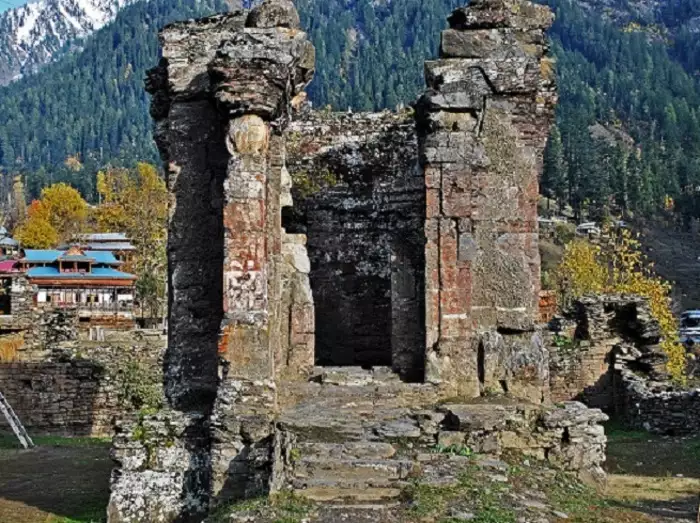EW News Desk:
Nestled in the picturesque valleys of Kashmir, the Sharda Sarwagya Pitham stands as a testament to the rich cultural and intellectual heritage of the region. This ancient seat of learning has a storied history that spans centuries and continues to intrigue scholars and visitors alike. In this article, we will delve into the history, significance, and legacy of Sharda Sarwagya Pitham, shedding light on its role as a center of knowledge and spirituality.
A Glimpse into History
Sharda Sarwagya Pitham, often simply referred to as Sharda Peeth, holds a significant place in the history of Kashmir. It is believed to have been established around the 5th century CE by the renowned philosopher and scholar, Adi Shankaracharya. The site was dedicated to the goddess Saraswati, the Hindu deity of knowledge, music, and art, making it a revered place for seekers of wisdom.
The word “Sharda” is derived from the name of the goddess, and “Sarwagya Pitham” translates to the “Seat of All Knowledge.” This name perfectly encapsulates the essence of the institution, which aimed to impart wisdom and education to its students.
The Institution’s Significance
Sharda Peeth served as a center of learning that attracted scholars, philosophers, and students from across the Indian subcontinent. It gained prominence as a hub of Sanskrit scholarship, philosophy, and the arts. The institution was instrumental in the preservation and propagation of ancient Indian knowledge and scriptures.
The curriculum at Sharda Sarwagya Pitham covered a wide range of subjects, including philosophy, astronomy, mathematics, grammar, and literature. This comprehensive education contributed significantly to the intellectual and cultural development of the region.
Religious Significance
In addition to its educational importance, Sharda Peeth held immense religious significance. It was a revered pilgrimage site for devotees of Saraswati and other deities. Many believed that seeking knowledge at this sacred place was an act of devotion in itself.
Sharda Peeth was also considered one of the 18 Maha Shakti Peethas in Hinduism. These are places where parts of the goddess Sati’s body were believed to have fallen, according to Hindu mythology. In Sharda Peeth’s case, it was the site of the goddess’s right hand.
Decline and Restoration
Despite its historical significance, Sharda Sarwagya Pitham faced various challenges over the centuries. The region witnessed numerous invasions, which led to the decline of this once-thriving center of learning. The seat of knowledge that had once attracted scholars and students from far and wide began to fade into obscurity.
In recent times, efforts have been made to revive and restore Sharda Peeth to its former glory. Various cultural and academic organizations are working towards preserving the site’s heritage and promoting the study of its rich history. This restoration aims to ensure that future generations can appreciate the cultural and intellectual contributions of this ancient institution.
Sharda Sarwagya Pitham, the Seat of All Knowledge in Kashmir, stands as a testament to the region’s rich intellectual and cultural history. It served as a beacon of learning and spirituality, attracting scholars and devotees for centuries. While the passage of time brought challenges and decline, the efforts to restore and preserve this invaluable heritage continue.
In an age where knowledge and wisdom are cherished more than ever, it is essential to recognize and celebrate the legacy of places like Sharda Peeth. They remind us of the enduring power of education, culture, and spirituality, and their ability to transcend time and boundaries.


